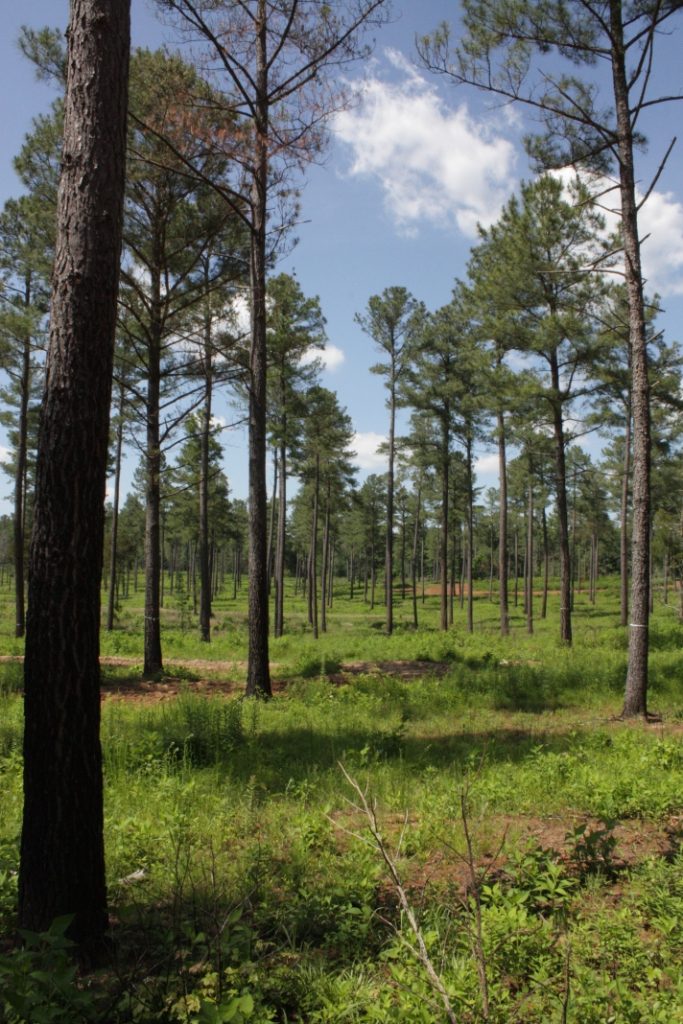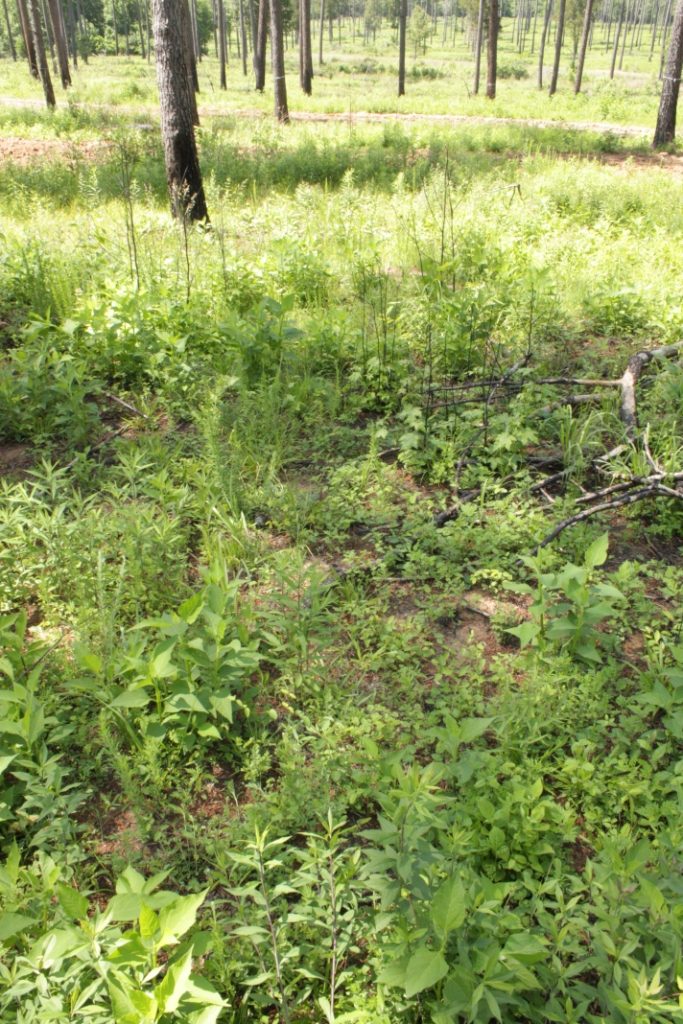Thickets, weeds and brush
Please do not rid your farm of us.
And in the fall when your bush hog is itching for a ride,
Within your barn let it continue to reside.
Else it will be to no avail
The Bobwhite will cry and wail:
“Where else am I to hide
When by the predator’s beady eyes I’ve been spied?”
“And, alas, where will I loaf about
When July’s blazing sun comes out?”
“Without these wonderful and diverse plants
My fragile bones will soon be picked clean by ants.”
Happy New Year to all of you!
Please excuse me the brief foray into poetry. I heard Dale Rollins, communicator extraordinaire, recite a similar verse about Broom Weed in Texas this summer at the annual National Bobwhite Technical Committee meeting. Sometimes a few simple words can have an impact.
I start off the New Year again emphasizing that the importance of thickets to the long term survival of quail (and dozens of other organisms) cannot be overstated. Lack of thickets is consistently what I find glaringly absent on most farms where “quail management” has occurred. I also find that many landowners believe they have done a ton of work and should have more quail, but what I often see is that they simply do not have enough habitat to support many coveys.
And while on the subject of thickets, hunters participating in Virginia’s annual avid quail hunter survey last year reported that 58% of their covey finds occurred in cut-overs (clear-cuts). Indeed, cut-overs often provide the only good thicket cover in many landscapes.
But as with agriculture, forestry has become more intense to keep pace with an ever- growing demand for wood products. And as it has intensified, the value of the wildlife habitat that cut-overs provide has declined. I’m not pointing fingers at an industry – we all play a role as consumers, too. What has long been termed “clean farming” is now being seen more often in forestry.

|
In the “old days,” new cut-overs were most often windrowed and burned. Both practices were fantastic for wildlife. Modern forestry rarely uses either technique anymore. Advancements in timber harvesting and processing techniques have allowed cleaner harvesting and more thorough processing of material on site, leaving little debris to windrow and burn. And advancements in herbicides have led to even cleaner cut-overs than ever. This is not in and of itself a bad thing. Soil is conserved, and water and air quality are improved. Better use of material means less waste. I don’t think we will go back to those old ways. What then can be done to improve the modern clear-cut for wildlife?
First – as the landowner you should know that you have options and “a say” in how your site is managed after harvest. I fear all too often the landowner gets a standard forestry prescription and doesn’t know they have wildlife options.
Now please understand … if maximizing your profits from the future timber is your primary concern, by all means listen to, and do, what your forester recommends. They are good people just trying to do a good job for you. But if you have wildlife interests, make sure they know that. Request that a wildlife biologist also be brought into the planning.
If your goal is to re-plant with a pine species like loblolly, short-leaf or long-leaf pine (or others conducive to fire), consider getting the site harvested with future understory burning in mind. On our own small stand of pines at home, when conducting our second thinning, we let our consulting forester know we would like to do some burning in the future. He laid out our haul roads to double as future fire lines. In addition, he requested that the cutter harvest a strip all the way around the stand so that perimeter fire lines could be constructed easily.
If you’re going to clear cut and you plan to re-plant with pines, consider long-leaf as a good option if you’re in long-leaf range. Long-leaf can be managed with fire at a very early age. In fact, it benefits from it. It is also generally grown at a wider spacing than traditional reforestation pines like loblolly. That means it closes canopy later so provides a longer term for early-successional habitats (weeds and thickets). Short-leaf pine also offers some advantages – consult a local forester and a wildlife biologist to indicate interest in non-standard forestry applications.

|
Regardless of type of pine to be planted, consider the following if at all possible:
1) Have a site preparation burn conducted – it scarifies (activates) seed long dormant in the native seed bank.
2) Do not replant pine up to road edges. Leave 25’ or more on each side of all major haul roads. These can be rotationally managed (disking, planting and or fire) to provide good bugging and winter feeding areas as the pines age and close canopy.
3) Consider planting no more than 435 trees per acre – this is a10’ x 10’ spacing. At this spacing, some manipulation can occur between pine rows (light disking, and or legume planting) until the pines reach canopy closure.
4) Wildlife clearings should also be made at this time. I know one landowner who cleared 100’ for every 300’ of planted pine throughout his cut-overs. These now serve as excellent summer brood rearing and winter feeding strips within a context of older, thinned and burned pines.
5) When considering pine release herbicide application, opt for herbicide solutions that will leave more plant diversity (particularly those that are friendlier to blackberry and legumes).
6) After release spraying has been done this summer, survey the site for residual herbaceous plant survival. If you do not find ample native plants and legumes returning, i.e., beggar weed, partridge pea, native lespedezas, poke weed, ragweed, blackberry and others, you might need to consider planting these species along road edges on old logging decks and anywhere feasible.
7) As ground cover between the pine rows begins to thicken and become mostly grass, consider some rotational strip disking between the pine rows. Disking need not be too heavy, only enough to break the soil and bigger clods. This will help maintain annuals like ragweed and many legumes, providing bugging areas during summer and seed gathering areas in winter.
I’ll leave this at the lucky 7. For comprehensive pine management information go to our web link https://www.dgif.virginia.gov/quail/managing-your-land/forest-land-management/ .
And remember, invite a wildlife biologist to your forestry planning meeting.


